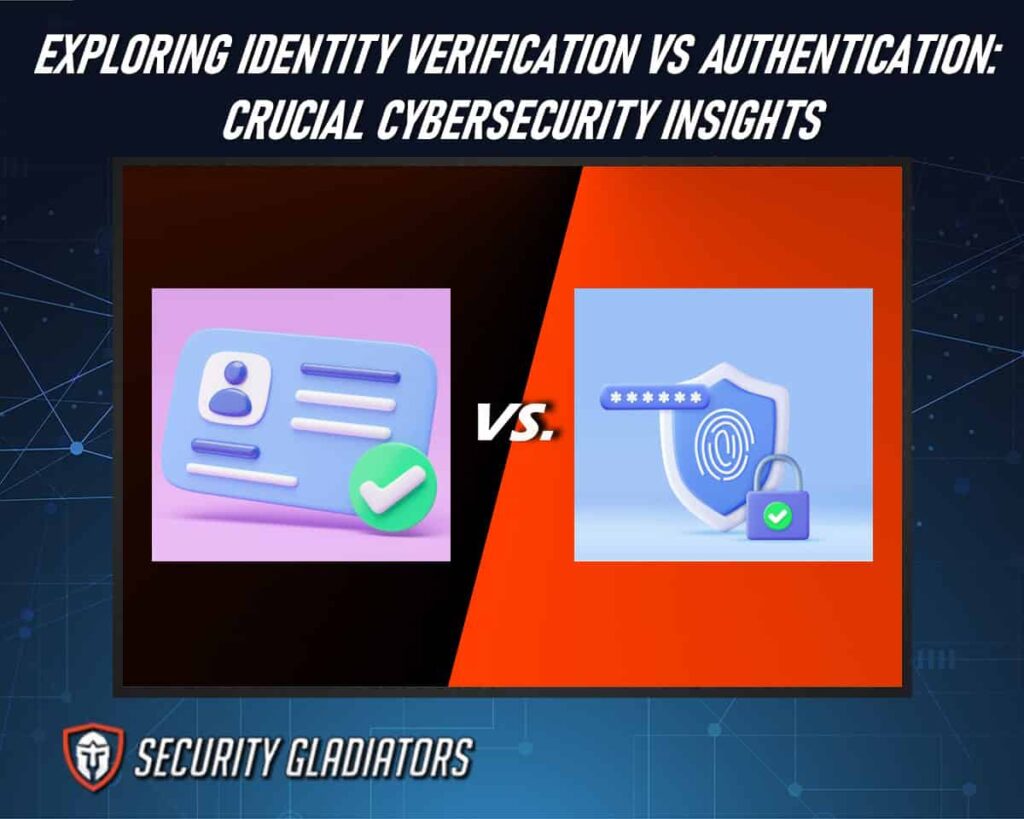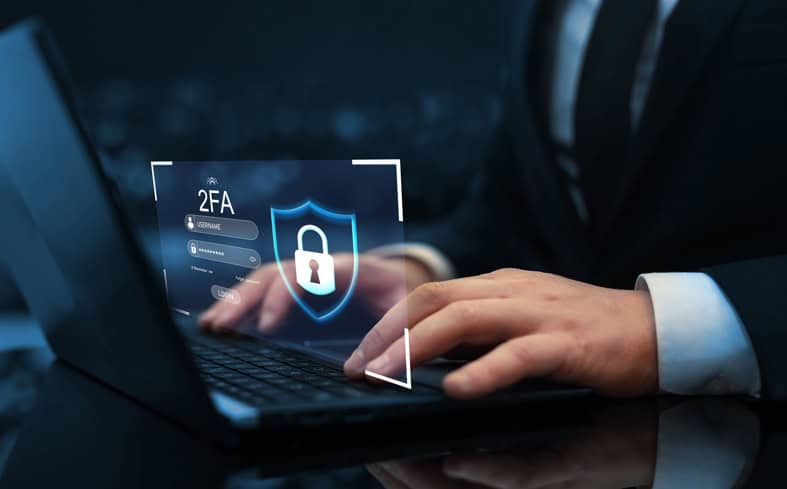In the realm of cybersecurity, verification refers to the process of confirming the accuracy and validity of an individual’s claimed identity. It involves verifying various personal attributes or credentials such as name, date of birth, social security number, or any other information that can establish a person’s identity. The goal of verification is to ensure that individuals accessing certain systems or platforms are who they claim to be, thereby preventing unauthorized access or fraudulent activities. On the other hand, authentication focuses on validating an individual’s identity through different methods of proof. It goes beyond mere confirmation and involves establishing trust and confidence in a user’s claimed identity. By delving into these concepts further, this article will shed light on how verification and authentication differ in terms of their application, frequency, duration, and key features. Additionally, it will highlight the similarities between these methods while exploring the advantages offered by biometric verification and authentication.

Table of Contents
Importance of Verification and Authentication in Cybersecurity
Verification and authentication are critical components of cybersecurity, as they help ensure the security of digital systems, networks, and data.
Here are important reasons why verification and authentication are crucial in the field of cybersecurity:
Access Control
Verification and authentication mechanisms are used to control access to digital resources. By requiring users to prove their identity, organizations can restrict access to only authorized individuals, reducing the risk of unauthorized access and data breaches. This is especially important for protecting sensitive information and critical systems.
Identity Verification
Verifying the identity of users and entities is essential for establishing trust and accountability in the digital realm. Digital identity verification checks various aspects to confirm the identity of an individual or entity in an online or digital environment. Authentication methods such as passwords, biometrics, and multi-factor authentication (MFA) ensure that users are who they claim to be, which is crucial for preventing impersonation and fraudulent activities.
Data Protection
Strong authentication helps protect data from unauthorized access and theft. By verifying the identity of users and ensuring they have the appropriate permissions, organizations can safeguard sensitive information and maintain the confidentiality and integrity of their data.
Compliance and Legal Requirements
Many industries and regulatory bodies require organizations to implement robust authentication and verification processes to comply with legal and industry-specific standards. Failing to do so can result in legal consequences and financial penalties.
Mitigating Insider Threats
Insider threats, where individuals within an organization misuse their access privileges, can be a significant cybersecurity risk. Proper verification and authentication processes help monitor and limit the actions of users, making it more challenging for insiders to carry out malicious activities without detection.
What Is Verification
Verification in cybersecurity refers to confirming the identity of a user, device, or entity attempting to access a digital system or network. It is essential to ensure that only authorized individuals or entities gain access to resources and data, helping prevent unauthorized access and security breaches.
The examples below provide a more detailed understanding of various aspects of verification in cybersecurity:
ID Verification
ID verification involves confirming the identity of an individual by verifying personal identification documents, such as passports, driver’s licenses, or government-issued IDs. In the digital realm, this process may include verifying scanned or photographed ID documents to establish the identity of a user before granting access to certain online services or accounts.
Document Verification
Document verification focuses on validating the authenticity and integrity of digital documents, files, or records. In cybersecurity, this may involve using cryptographic methods to verify the digital signatures of documents to ensure they haven’t been tampered with or altered.
Data Verification
Data verification pertains to the validation of the accuracy and reliability of data. It ensures that data transmitted or received over a network is intact and unaltered during transit. Techniques such as checksums, hash functions, and digital signatures are commonly used to verify the integrity of data.
Identity Verification
Identity verification encompasses the process of confirming the identity of an individual or entity accessing digital services or systems. Digital identity verification solutions often involve multi-factor authentication methods, such as something the user knows (e.g., a password), something the user has (e.g., a smart card), or something the user is (e.g., biometrics) to establish a high level of confidence in the user’s identity.
What Is Authentication
Authentication in cybersecurity refers to verifying the identity of a user, device, or entity seeking access to a digital system or network. It ensures that the individual or entity is who they claim to be by using various methods such as passwords, biometrics, or multi-factor authentication. Identity authentication is a crucial security measure that helps prevent unauthorized access, protect sensitive information, and establish trust in digital interactions.

Here are the three common categories of authenticators used in cybersecurity:
Something the customer knows
This category involves knowledge-based factors, such as passwords or personal identification numbers (PINs). Users prove their identity by providing something only they should know.
Something the customer has
These authenticators include physical items like smart cards, security tokens, or mobile devices. Users prove their identity by possessing something tangible that grants access.
Something the customer is
This category focuses on biometric factors, such as fingerprints, facial recognition, or retinal scans. Users authenticate themselves based on unique physiological or behavioral characteristics, which are inherently tied to their identity.
Key Features that Distinguishes Verification and Authentication
Here are features of authentication vs verification:
User Data
Authentication involves verifying the identity of a user or entity. It typically relies on a combination of something the user knows (e.g., a password or PIN), something the user has (e.g., a smart card or mobile device), or something the user is (e.g., biometric characteristics like fingerprints or facial recognition). Verification, on the other hand, focuses on confirming the accuracy or authenticity of data, documents, or information. It doesn’t necessarily involve verifying a specific user’s identity. For example, you might verify the authenticity of a document without authenticating a user.
Frequency
Authentication typically occurs when a user or entity wants to access a system, application, or service. It is often a one-time event, or it may occur at regular intervals, such as when a user logs in, to ensure that the user’s identity is still valid. Verification can be a continuous or periodic process. For example, a system might verify the validity of a digital certificate every time it’s presented, or a financial institution might verify the authenticity of a check when it’s deposited.
Duration
Authentication is usually a temporary state that grants access to a system or resource for a limited duration. Once the authentication session expires or the user logs out, access is revoked. Verification doesn’t necessarily have a defined period. It can be a one-time check, an onboarding process, or a periodic review, depending on the context. For example, verifying the authenticity of a product’s serial number can be a one-time event, while verifying a person’s credentials for employment may be an ongoing process.
Advantages of Biometric Verification and Biometric Authentication
The similarities between verification and authentication methods lay the foundation for understanding their respective advantages in identity checking. In particular, biometric verification and biometric authentication offer distinct benefits in ensuring secure access to sensitive information.

This method offers several advantages:
Uniqueness
Biometric traits are inherently unique to individuals, making it difficult for impostors to replicate or forge.
Convenience
With biometric verification, individuals do not need to remember complex passwords or carry physical tokens like ID cards.
Accuracy
Biometric systems have a high level of accuracy when properly implemented and calibrated, reducing the risk of false positives or negatives.
Non-transferable
Unlike traditional authentication methods such as passwords or PINs, biometrics cannot be easily shared or stolen. This ensures online transactions are secure and private.
Frequently Asked Questions
How Does the Verification Process Ensure the Accuracy and Integrity of User Data?
The verification process ensures the accuracy and integrity of user data by employing various techniques such as document verification, biometric authentication, and database checks. These methods validate the information provided by users to minimize errors and fraudulent activities.
What Are Some Common Similarities Between Different Methods of Verification and Authentication?
Common similarities between different methods of verification and authentication include the reliance on security credentials or tokens, such as passwords, PINs, biometrics, cryptographic keys, two-factor authentication (2FA) or multi-factor authentication (MFA), to establish identity or verify information. Both processes often involve the use of digital certificates or tokens to ensure the integrity and authenticity of data or communications. Additionally, they aim to enhance security by confirming the validity of the requesting party or the integrity of the data, providing access only when the criteria are met.

How Can Businesses Balance Security and User Convenience in Authentication?
Balancing security and user convenience is essential. To do this, businesses can implement MFA to enhance security while allowing users to choose from a variety of authentication methods. They can also employ adaptive authentication, which adjusts security measures based on the risk associated with the specific transaction.
What Are the Risks Associated With Identity Fraud and Weak Authentication?
Identity theft can lead to financial fraud, unauthorized access to a bank account or social media account and the compromise of personal information. Weak authentication methods, such as easily guessable passwords, can make it easier for attackers to gain unauthorized access to user accounts and systems, leading to data breaches and financial losses.
Conclusion
Understanding the distinctions between verification and authentication is essential for implementing effective cybersecurity measures. By combining these two processes appropriately and leveraging technologies like biometrics, organizations can enhance their security posture and better safeguard against potential threats. As cyberattacks continue to evolve, staying knowledgeable about these crucial aspects of cybersecurity will remain paramount in protecting sensitive information and maintaining trust in digital transactions.

